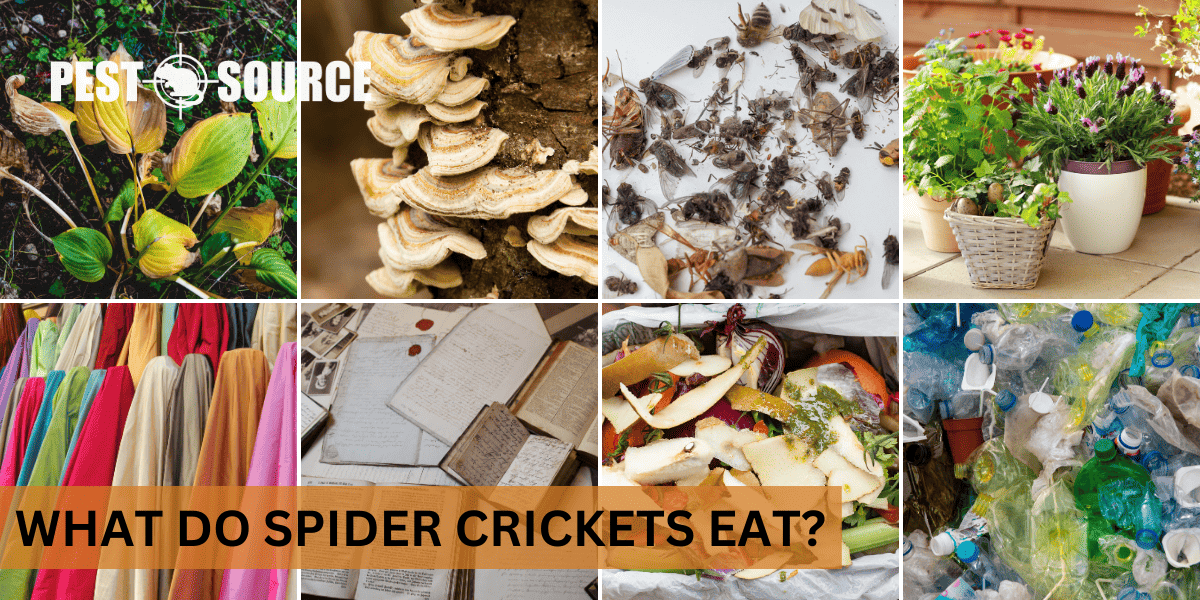Spider crickets are omnivores, feeding on a wide range of organic matter, including fungi, plant material, fabric, and even other insects. Their varied diet allows them to survive in diverse environments. This article discusses the dietary habits of spider crickets, providing insights into how their feeding behavior influences where they are found and how to manage infestations.
POINTS
- Spider crickets are omnivorous scavengers whose diet includes decaying plant matter, fungi, dead insects, and occasionally live plants in the wild, while in domestic settings, they may consume fabric, paper, and food scraps.
- The diet of spider crickets directly impacts their growth, reproductive habits, overall health, and population dynamics, with a rich diet leading to faster maturity and increased population density.
- Compared to other cricket species, spider crickets have a more varied diet, are more opportunistic feeders, and occupy different ecological niches, which affects their interactions with other species and their role in the ecosystem.
- Human activities alter the availability of food for spider crickets, leading to changes in their feeding patterns, predator-prey dynamics, and position in the food chain, with implications for biodiversity and ecosystem stability.
- The nutritional content of a spider cricket’s diet supports their physical functions and adaptive strategies, enabling them to thrive in diverse environments and maintain essential functions such as molting, jumping, and reproducing.
Diet of Spider Crickets
Spider crickets, also known as camel crickets or cave crickets, have a varied diet that reflects their adaptability to different environments. Understanding what these insects eat is key to managing their presence in both natural and domestic settings.
Primary Diet in the Wild
In the wild, spider crickets are omnivorous scavengers that consume a wide range of organic materials. Their diet primarily consists of:
- Decaying plant matter: They help decompose fallen leaves, wood, and other plant debris.
- Fungi: They feed on various fungi, which thrive in their moist habitat.
- Dead insects: They contribute to the ecosystem by consuming carcasses, aiding in decomposition.
- Live plants: Occasionally, they may nibble on live plant tissues, especially in times of food scarcity.
Environmental factors and species variations can influence their diet. For example, a spider cricket living in a particularly lush environment may consume more live plants, while one in a cave ecosystem might rely more on decaying matter and fungi.
Dietary Preferences in Domestic Settings
In human-inhabited environments, spider crickets’ diets can differ significantly from their natural food sources. Inside homes or buildings, they are known to eat:
- Fabric: They can chew on clothing, curtains, and furniture.
- Paper: Books, wallpaper, and other paper products are at risk.
- Food scraps: They will readily consume any food waste left unattended.
- Other household items: In their quest for sustenance, they may also damage rubber, plastic, and other soft materials.
The shift in diet from natural to domestic sources highlights their ability to adapt to available resources, which is a key factor in their survival in various environments.
Feeding Habits, Foraging Patterns, and Dietary Impact on Spider Cricket Lifecycle
Spider crickets exhibit nocturnal feeding habits, foraging for food primarily at night. Their foraging behavior is driven by the availability of food sources and the need to avoid predators. The diet of spider crickets has a direct impact on their lifecycle and behavior:
- Growth: A rich diet accelerates their growth, allowing them to reach maturity faster.
- Reproduction: Adequate nutrition is crucial for successful mating and egg production.
- Health: A balanced diet ensures better survival rates and resilience against diseases.
- Population dynamics: Abundant food sources can lead to increased population density and expansion into new areas.
Spider crickets’ dietary habits are integral to their survival and reproduction, influencing their behavior and role within their respective ecosystems.
Comparative Analysis of Spider Cricket Diet with Other Cricket Species
Comparing spider crickets to other cricket species reveals both similarities and differences in their diets. While all crickets are generally omnivorous, spider crickets are more inclined towards scavenging than their relatives. Here are some key points of comparison:
- Diet variety: Spider crickets have a more varied diet compared to field crickets, which often feed on crops.
- Feeding strategy: Unlike house crickets that may be more selective, spider crickets are opportunistic feeders.
- Ecological role: Due to their dietary differences, spider crickets and other cricket species occupy different niches within the ecosystem, affecting their interactions with other species.
These dietary distinctions play a significant role in the ecological impact of each cricket species, shaping their relationships within the food web.
Human Influences on Spider Cricket Diet and Ecological Impact
Human activities have a profound effect on the diet of spider crickets and their ecological role. Changes in land use, urbanization, and the introduction of new food sources can lead to shifts in their feeding patterns. These changes can have cascading effects:
- Food availability: Urban environments provide a new array of potential food sources for spider crickets, altering their diet and behavior.
- Predator-prey dynamics: As spider crickets adapt to human environments, they may become prey for domestic pets or other urban-adapted predators.
- Food chain position: The alteration in diet can affect their position in the food chain, potentially impacting biodiversity and ecosystem stability.
Human influence on spider cricket diets is an important factor in understanding their adaptability and the broader ecological consequences of our presence.
Nutritional Analysis of Spider Cricket Diet
The diet of spider crickets is not just varied; it’s also nutritionally rich, allowing them to thrive in diverse environments. A closer look at the nutritional content of their diet reveals how it supports their bodily functions and adaptive strategies.
Nutritional Needs of Spider Crickets
Spider crickets require a balance of proteins, carbohydrates, and fats, along with various vitamins and minerals, to maintain their health and support their active lifestyle. Their omnivorous diet provides:
- Proteins: Essential for growth, repair, and reproduction, proteins are obtained from fungi, decaying matter, and other insects.
- Carbohydrates: Found in plant matter, carbs supply the energy needed for their daily activities and survival in colder months.
- Fats: Sourced from animal carcasses and seeds, fats are vital for energy storage and insulation.
This balanced diet ensures that spider crickets can perform essential functions such as molting, jumping, and reproducing effectively.
Dietary Support for Physical Functions
Spider crickets’ diet supports their unique physical functions, like their impressive jumping ability, which requires strong muscles and a robust exoskeleton. The proteins and minerals from their diet are crucial for developing and maintaining these structures. Additionally, their diet aids in sustaining the energy levels needed for their nocturnal foraging activities.
Adaptive Strategies Enabled by Diet
The varied diet of spider crickets is a key factor in their adaptability. They can survive in environments where other insects might fail due to the scarcity of certain food types. This dietary flexibility has allowed spider crickets to colonize a wide range of habitats, from damp caves to arid basements.
By consuming a range of materials, including those that are not typically part of an insect’s diet, spider crickets can exploit niches that are inaccessible to more specialized feeders. This adaptability is a survival strategy that has served them well in the face of environmental changes and human encroachment.
How to Get Rid of Spider Crickets
To effectively get rid of spider crickets, it is essential to reduce humidity in the environment, as they thrive in moist conditions. Sealing cracks and openings in walls and foundations denies them entry into homes. Using sticky traps in areas where they are frequently seen can capture them effectively. Reducing clutter in basements, garages, and similar areas eliminates their hiding spots. For severe infestations, chemical treatments or calling a professional exterminator may be necessary. Regular cleaning and vacuuming can also help in preventing their return.



